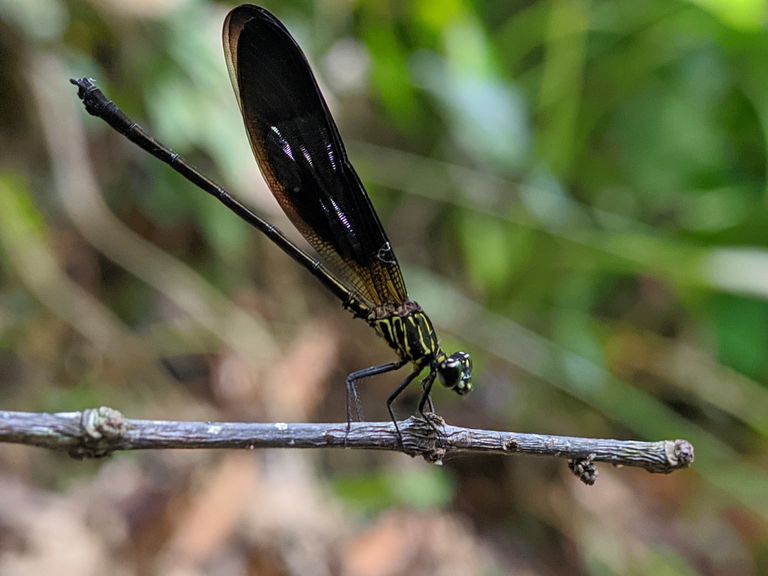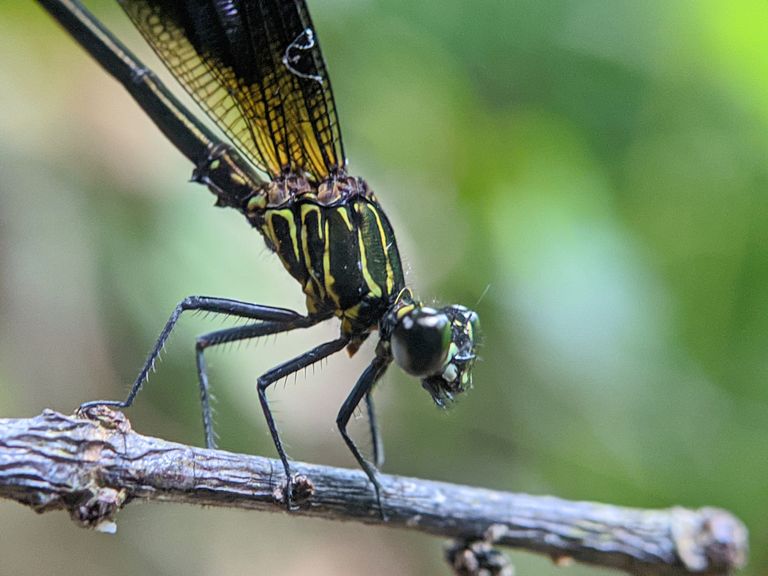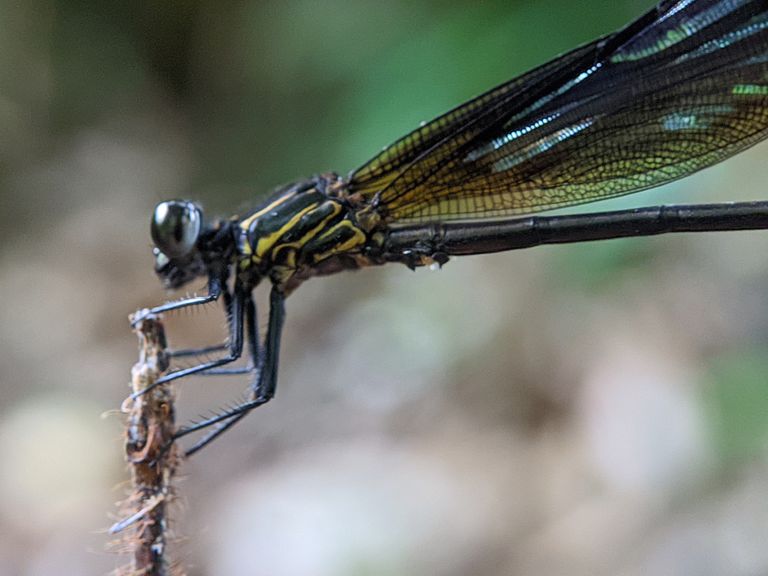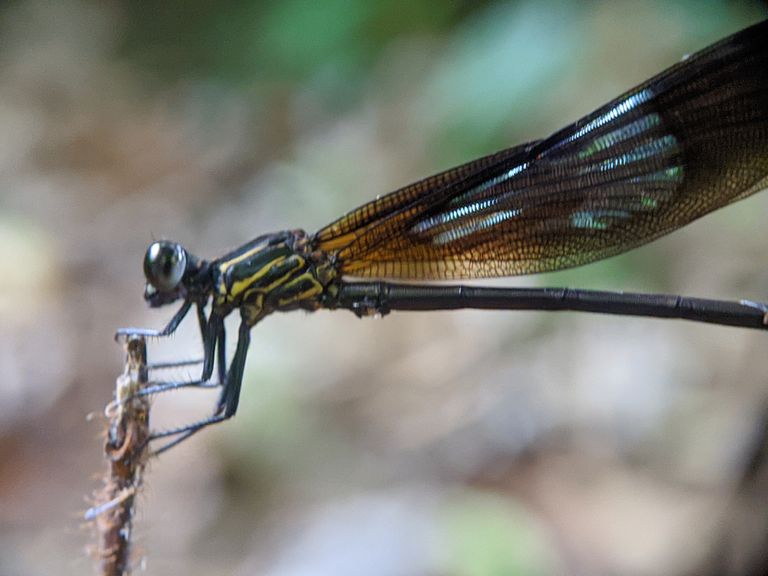
The photo above is a male pink-red stone dragonfly (Rhinocypha fenestrata fenestrata) that was documented in the Gajah Wong watershed, Yogyakarta in 2015.

The male-pink dragonfly (Rhinocypha fenestrata fenestrata) in the Gajah Wong watershed, Yogyakarta is easy to find in the dry season. As seen in the photo above, the male pink-red dragonfly (Rhinocypha fenestrata fenestrata) has black compound eyes and a black synthorax with blue on the sides and pink on the top. Rahadi (2013) in the book Flying Dragon Wendit mentions the wing color of the pink-red-pink male dragonfly (Rhinocypha fenestrata fenestrata) is black with a brown wing base.

The pink stone dragonfly (Rhinocypha fenestrata fenestrata) has a habit of perching on branches near waters and is sensitive to human presence (Rahadi, 2013). However, during observations in the Gajah Wong watershed, Yogyakarta, the pink-red stone dragonfly (Rhinocypha fenestrata fenestrata) was not very sensitive to the presence of humans, even when it was documented using a pocket camera with a distance of about 10 cm from its body, it did not fly away from the location. perched on top of a pile of garbage on the river bank.

The pink stone dragonfly (Rhinocypha fenestrata fenestrata) has a habitat in clear watersheds (Rahadi, 2013), but in the field there are also those that can be found on the banks of slightly murky streams such as in the Gajah Wong watershed, Yogyakarta. The pink-red dragonfly (Rhinocypha fenestrata fenestrata) has a limited distribution on the island of Java (Steinmann, 1997).

In nature, apart from being a component of the food chain, the pink-red dragonfly (Rhinocypha fenestrata fenestrata) is also useful as a bioindicator of a waters.